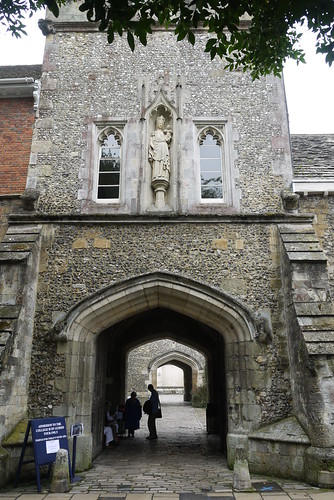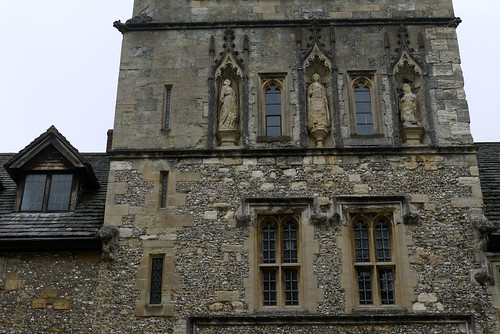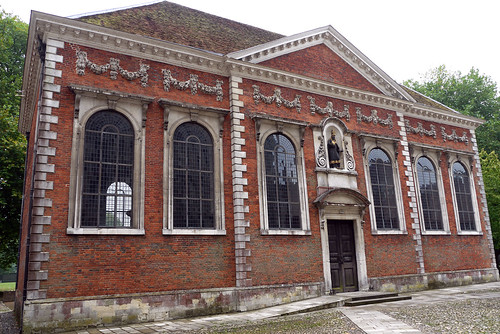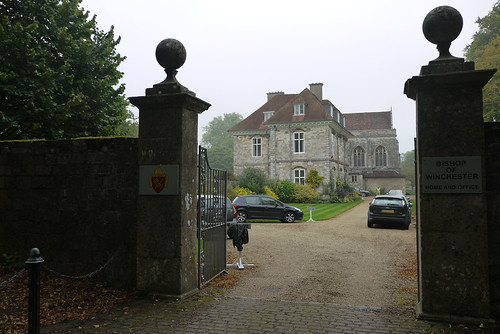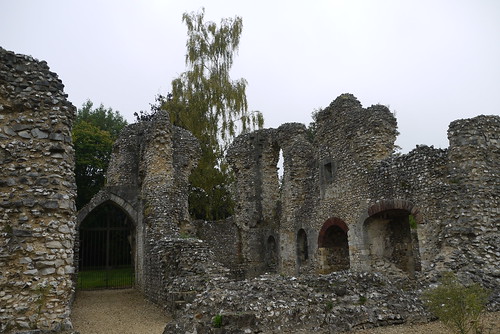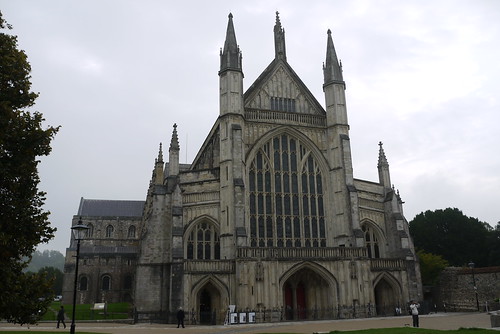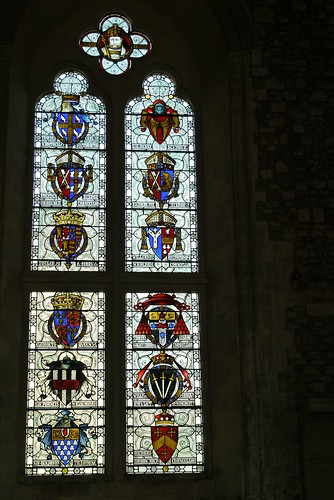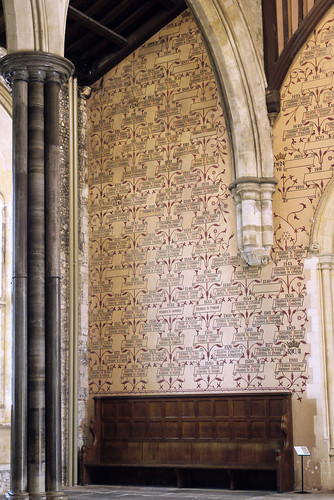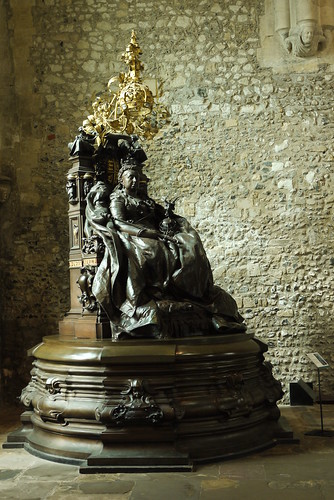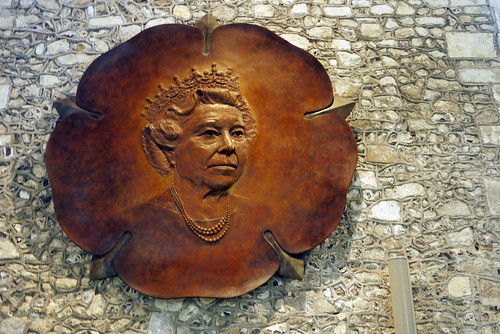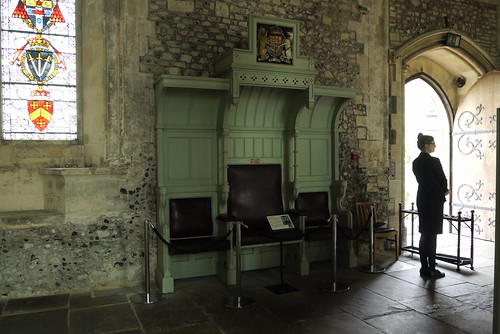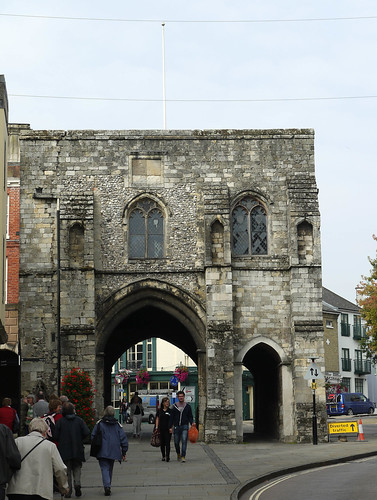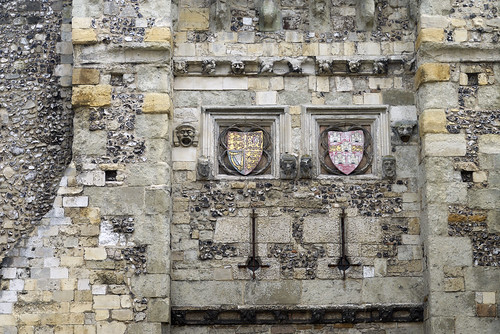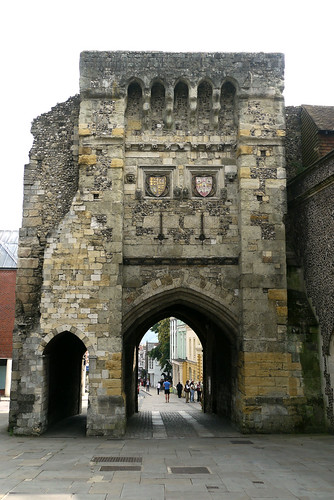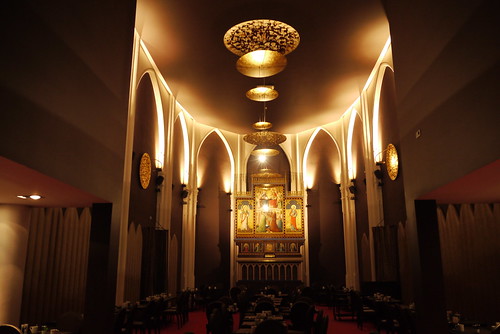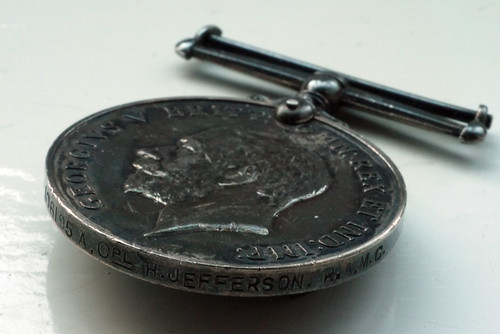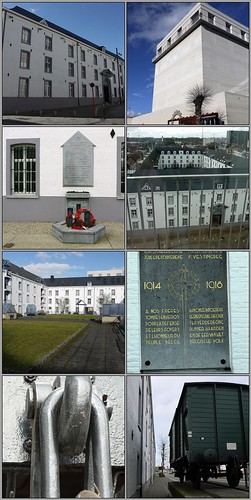William of Wykeham, Bishop of Winchester and Chancellor (or, as we would now say, Prime Minister) of England, was a self-made man born at Wickham, Hampshire, in about 1323. By his personal talents, by a patron’s gift of an education, and above all by a certain natural toughness, he worked his way to the top of the executive class of his day and amassed a considerable fortune. In an age when literacy, learning and government were the province of the Church, Wykeham wished to see the central government served by a well educated clergy. Placed as he was at the top of the tree, enjoying contacts with the throne and the Holy See, he was ideally situated to see to the meeting of this need. And his personal revenues lay ready to hand.
In 1382 he obtained his charter to found Winchester; the buildings were begun in 1387, and occupied, though incomplete, in March 1394. Meanwhile by 1386 his other and senior foundation at Oxford (New College, or Saint Marie College of Winchester in Oxford) had begun operations.
Thus by the end of the fourteenth century Wykeham’s great scheme for the supply of educated men dedicated to God and the public service, was realised and in working order. His seventy scholars at Winchester were to go on to New College, and thence out into the world, ready and equipped to serve.
From that day to this Wykeham’s seventy Scholars have lived in College. The original community was self-contained in the mediaeval manner. It numbered 115 persons, governed by the Warden and ten Fellows, with two schoolmasters and three chaplains. Sixteen quiristers (choristers) and three lay clerks completed the foundation proper, but Wykeham also allowed the education he provided to be shared at their own expense by ten others, the sons of gentry and particular friends of the College. These were the forerunners, if not the germinal idea, of the present Commoners.
When Henry VI founded Eton College, he took Winchester as his model, visited it on many occasions, borrowed its Statutes and removed its Headmaster and some of the Scholars to start his new school but apart from that interruption Winchester carried out its Founder’s intentions with great distinction until the Reformation.
Tag Archives: History
Wolvesey Palace
The ruins of Wolvesey Palace are situated next to the current residence of of the Bishop of Winchester.
The surviving ruins of Wolvesey were largely the creation of one man, Bishop Henry of Blois (1129-71), who built a palace befitting his immense wealth and powerful position.
When Henry of Blois became bishop of Winchester in 1129, the residence consisted of a large hall block (the ‘west hall’), which had been built in about 1110 by the previous bishop, William Giffard (1107 – 29).*
Until his death 42 years later, Henry continually added new buildings. Starting with another hall block (the ‘east hall’), he then added a keep, a defensive tower and two gatehouses.
Although subsequent bishops carried out various repairs and alterations to the buildings, Henry’s palace survived virtually intact for the next 500 years. It is his work that comprises most of the ruins we see today.*
*From an information board with in the ruins
Winchester Cathedral
I invite you to read my post about Winchester Cathedral on the Broad Oak Magazine blog.
Within the Great Hall
In addition to the Wedding Gates and The Round Table there are other things of interest within The Great Hall.
The stained glass windows were made in 1875-80. The glass features the arms of famous people associated with Hampshire. The portraits show significant kings involved with the history of Hampshire.
The east wall features a nineteenth-century painting showing the names of the members of parliament from 1283 (Edward I) to 1868 (Victoria).
A doorway that originally led to the apartments of Queen Eleanor, wife of Henry III.
A bronze statue of Queen Victoria which is the work of Sir Alfred Gilbert R.A. It was presented to the County by the High Sherrif of Hampshire in 1887 to mark the Queen’s Golden Jubilee.
A bronze sculpture commissioned in 2012 to mark the Diamond Jubilee of Her Majesty Queen Elizabeth II is the work of Vivien Mallock.
The Great Hall has been used for holding courts throughout history. This nineteenth century judge’s bench was used in the Assize Courts, then in the Crown Court, which moved to the adjoining building in 1974.
The Westgate
The Westgate is one of only two surviving medieval gateways that were one an integral part of the city wall. The other gate being Kingsgate and the church of St Swithun which featured in a previous blog post.
Originally built in the 12th century and later remodelled, the west face was added in the 14th century to defend the city against threatened invasion from France. The openings below the parapet on the west face of the gate were for dropping ammunition such as rocks, oil or even boiling lead on potential invaders. The loops below the shields were designed for primitive hand-held cannons, and the slots in the gateway arch held a portcullis. The little room above the arch, originally a guardroom, served as a debtors’ prison from the 16th to the 18th century, and is now a museum.*
The contents of the museum sound interesting but unfortunately it wasn’t open on the day we passed it on our route to the Great Hall.
*From the Pitkin City Guide to Winchester.
Mechelen
I invite you to read my post about the historic town of Mechelen on the Broad Oak Magazine blog.
Lives of the First World War
It is my turn at Vision & Verb today. My post is about a project launched by the Imperial War Museum (IWM). It is a digital memorial to record the life of every person who served in uniform or worked on the home front during World War One. An ancestor of mine is listed on the site so I will be taking a small part in the project. I invite you to join me there.

Stonehenge, English Heritage Guidebook by Julian Richards
 Synopsis (From the English Heritage website):
Synopsis (From the English Heritage website):
Stonehenge is one of the best-known ancient monuments in the world and its global importance is reflected in its World Heritage Site status. Although its exact purpose remains a mystery, this magnificent monument was created in the Neolithic period with banks, ditches and iconic standing stones aligned to mark the passage of the sun and the changing seasons at the solstices.
This comprehensively revised and superbly illustrated guidebook reflects the recent changes to the site and its surrounding landscape and takes account of the latest research and analysis. It discusses the key questions of when, how and why Stonehenge may have been built, and who might have built it. The guidebook includes an innovative and newly commissioned timeline that places Stonehenge and the surrounding monuments in historical context, and the site and landscape are explored through brand new maps, diagrams, photographs and reconstruction drawings.
Review:
The latest Stonehenge guidebook published in 2013 was published to co-incide with the opening of the the new visitor centre and facilities. The guidebook has been brought up to date with the latest knowledge and theories. In addition to the Stonehenge monument all the other nearby features of the Stonehenge environment are included along with its history and archaeology. The book is illustrated with supportive photographs and maps.
I found the guidebook very interesting and informative.
Kazerne Dossin
It is my turn at Vision & Verb today. My post is about the Kazerne Dossin museum and military barracks which serve as a permanent history and memorial to the Jews who were held there awaiting deportation to Nazi concentration camps during WWII. I invite you to join me there.

More photos of the museum and barracks can be found in my Flickr set.

